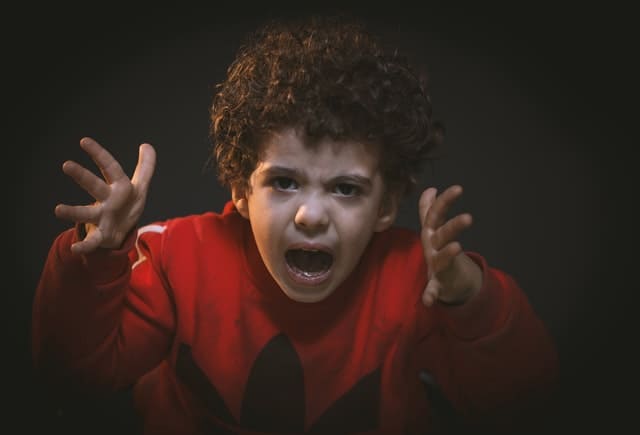If you’re a parent or teacher, you know your small kids experience big feelings. Sometimes they seem to come out of nowhere, while other times, your kids have emotional responses that you can easily trace to some prior moment in the day. Regardless of how their feelings are stirred up, we must normalize talking about them.
Children who are taught that talking about feelings is healthy will learn not to bottle up their life experiences. Instead, they’ll learn to share them and process them. Just like adults, when kids begin to understand their emotions and name them, they have a fighting chance of working through their feelings.
This article will discuss talking about feelings and teaching your child to identify and express them.
Talking About Feelings
What Is The Difference Between Emotions And Feelings?
While emotions and feelings are used interchangeably, they are slightly different. Emotions are bodily reactions that occur through neurotransmitters and hormones in the brain (iMotions). Feelings, on the other hand, are a conscious experience.
Talking About Feelings Helps Children Process
Though emotions can be as unique as the children who experience them, there are generally four big emotions in which everyone’s feelings are grounded: anger, sadness, fear, and loneliness. We could easily break down each of these big emotions into resulting feelings, but for the sake of this article, we’ll focus on the main ones.
Suppose you are looking for a more extensive representation of the full array of emotions to help teach your child that talking about feelings doesn’t have to feel overwhelming or frustrating. In that case, you can check out our feelings poster.
The Big Four Feelings and Emotions for Kids
Let’s discuss the big four feelings and emotions for kids and how you can help your child identify them.
Anger

In general, anger is secondary to hurt, fear, frustration, or injustice. Sometimes your child will feel triggered to anger by one of these emotions, and sometimes they will feel all four of these emotions at once.
Anger is an uncomfortable emotion for both adults and children. It’s also an uncomfortable emotion to witness in another person. Anger for children often manifests itself as a temper tantrum, hitting, grabbing another child’s toy, or having an emotional outburst such as crying coupled with screaming.
It’s important to understand that anger triggers your child’s fight or flight response. Jaclyn Shlisky, PsyD, writes, “Anger may seem irrational, but for a child that hasn’t yet learned how to regulate emotions, it’s an immediate natural reaction to some sort of wrongdoing your child feels” (Parent.com). To help your child recognize and self-regulate when talking about the feelings and emotions that are stirred up by anger, you can do the following:
- Identify and explain the feeling using age-appropriate language and materials, such as songs, movies, pictures, or facial expressions.
- Teach your child different ways they can deal with their feelings.
- Praise your child when they talk about their feelings.
- Reinforce your child’s attempts to discuss their feelings by incorporating feelings into game time, car rides, when you’re sharing a meal, etc.
Using anger as an example, you can help your child identify and explain the emotion. For instance, if your child doesn’t want to follow their bedtime routine one night and begins to have a temper tantrum, you might say, “It seems like you’re feeling angry about having to brush your teeth tonight. You are crying, and your face looks like this. What can you do? I think you can ask for help or take some deep breaths and try again.”
Acknowledging your child’s emotions not only helps them identify their feelings using self-awareness skills, but also helps them understand how they can deal with them. The next step is to praise your child when they acknowledge the emotions they’re experiencing. Additionally, praise them when they decide how to handle that emotion. While at the beginning, you might provide examples of solutions for them, they will eventually learn to come up with solutions on their own.
Later, when their emotions have settled–this could be an hour later or even a couple of days later–you can reinforce your child’s attempts to discuss their feelings. You can also discuss the choices they made to process the emotions. For example, “Last night, you seemed angry about brushing your teeth. I was so proud of you when you figured out you were feeling anger and then took some nice, deep breaths before finishing brushing. You handled your anger so well!” This kind of reinforcement lets kids know what they did well, and it can help build their confidence during future moments with difficult emotions.
Sadness

When you’re teaching your child to identify and express emotions, sadness is one of the first you will want to explore. We all experience sadness at one point or another, and children tend to present sadness in similar ways to adults.
The Center on the Social and Emotional Foundations for Early Learning at Vanderbilt University suggests playing the game Make a Face to begin conversations about emotions with your child or student.
This is a great way to open a conversation with a child who feels sad. The game begins when you say, “I am going to make a face; guess what I am feeling by looking at my face.” This game helps the child assign a name to the feeling and then allows the adult to reinforce their connection in the moment. Once the emotion is established, you can ask the child what has caused their sadness and then follow the steps above (identify and explain, teach them ways to deal with their emotions, praise the child, and reinforce their attempts).
When children deal with difficult emotions, it’s essential to let them know that while their feelings belong to them, they are common among children and adults alike. They are not alone.
Fear
In most educational materials on feelings and emotions for kids, fear is at the top of the list. The reason for this is obvious–just think back to when you were a child. Perhaps you had a fear of the dark, or big animals, or loud noises. Much of this fear is rooted in feelings of uncertainty and the vastness of “the unknown.” Often, children express fear in uncertain ways and this can lead to anxiety later in life.
If your child or student is having a hard time identifying and expressing fear, here are some tools you can give them to help them express it more productively:
- Encourage them to ask for help.
- Invite them to say the emotion instead of showing it. (For example, “I am feeling scared,” instead of crying, hiding, or throwing a tantrum.)
- Relax and try again. (For example, if a child fears reading aloud in class, invite them to take some deep breaths and try again.)
- Tell a grown-up.
Teaching your child to identify and express emotions allows them to connect with you and with others in a way that keeps them safe and gives them a greater sense of confidence when they are not with you. It also builds camaraderie and community because it teaches them that we are all in this together.
Loneliness

The final emotion we’ll discuss here is loneliness.
Research shows that children form attachments to other people right from the start. Children who have a secure attachment with at least one adult experience benefits and learn that connection to others is a positive thing. Conversely, when children feel disconnected from others, they can experience loneliness.
Unfortunately, loneliness in kids has skyrocketed as a result of the pandemic. As you might imagine, kids attending classes online or being taken out of their normal activities has resulted in an epidemic of loneliness.
Loneliness is a complex emotion but helping your child identify it in themselves and then process it, benefits them greatly. Bethany Vibert, PsyD, a clinical psychologist at the Child Mind Institute, suggests some helpful strategies to talking about the feeling of loneliness with your child. Dr. Vibert writes:
Ask open-ended questions. For example, if your child says they miss spending time with someone they used to see a lot, you can ask questions about that. “What did you really like doing with her? What do you miss the most about seeing her?”
Make observations. Sometimes comments are a good alternative to questions. So, if you notice that your child isn’t spending time with people as much as they used to, you might point that out. Then leave space for them to talk.
Validate their experiences. Showing genuine interest goes a long way. Do your best to listen without judgment (or visible panic) to whatever they have to say. Try also to avoid overreacting with too much sympathy or emotion, since that might make them feel even worse. You can show that you’re listening by reflecting back on what they’re saying (“It sounds like you’re having a hard time”), or saying supportive things like “That sounds tough. Would you tell me more about that?”
Talking about feelings and emotions with your children or students teaches them that their experiences are valid, they can manage their feelings, and that you care about them.
Soul Shoppe supports parents and school communities by creating and facilitating dynamic social-emotional learning programs, parent workshops, and more. For more information on how to talk about feelings with the kids in your life, please contact us.
You May Also Like:
Self Care Activities for Students
Virtual Social Learning Activities
Teaching Children How To Self-Soothe


